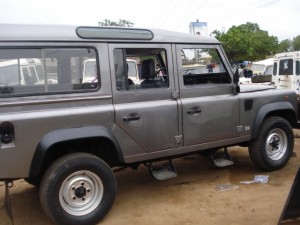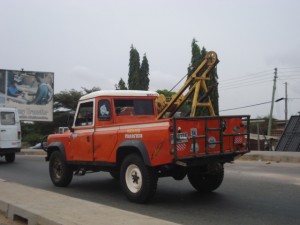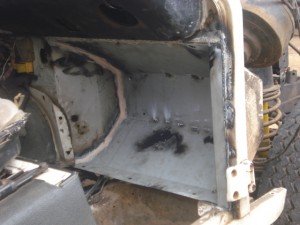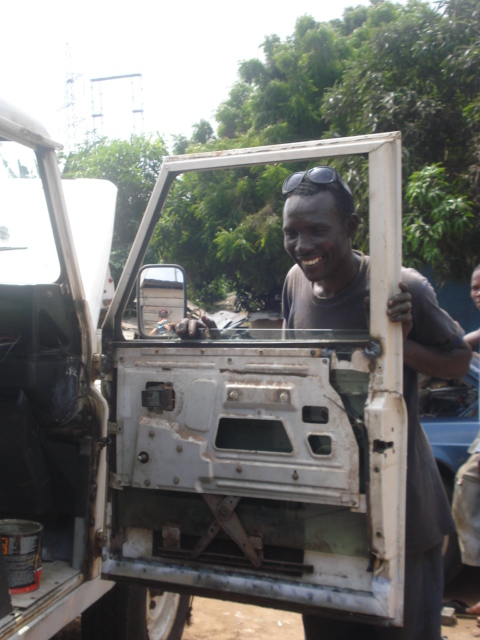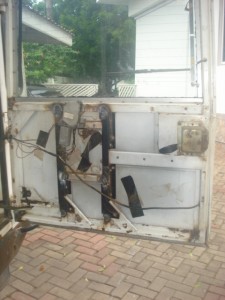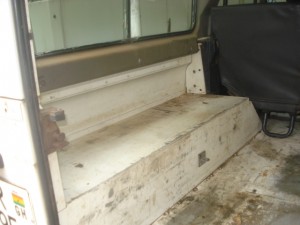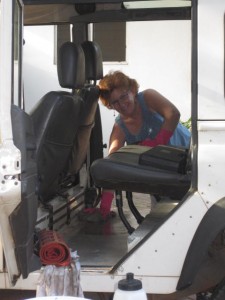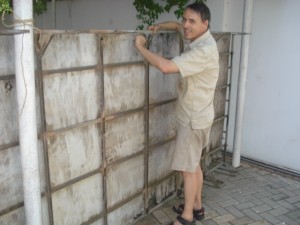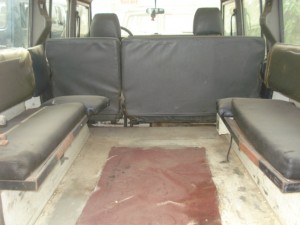Why more than one phase of electrical? Because I want to focus first on the basic things every vehicle requires to run and for basic safety and roadworthyness certification. Headlights, horn, signal lights etc. The basic stuff. There are other systems required to support expeditioning, but that can come later – in Phase II.
I drafted up a list of the items to do in Phase I and II and got a couple of quotes on Phase I. The low bidder, by a wide margin, was Eric from Opere’s shop under the tree so I asked him to do the work while we were in Egypt. The work is now done and it is amazing how much you appreciate little things. There was not very much right about the basic electrical when I first bought this vehicle. Most seriously the the alternator did not work, a problem that was corrected when a new-to-me alternator was installed with the motor. The front windshield wipers wiped, the rear did not. Only a couple of the signal lights worked, the brake lights did not, nor did the headlights, nor the horn. Up till now whenever I have pulled up to the high, solid, windowless gate outside our house I have had to rev the engine so the guard knows I am there to let me in rather than honk as one normally does. Fortunately the engine makes lots of noise. The horn now works, as do all the lights. He also did the rear windshield wiper motor and the windscreen washer fluid pump. He charged me GHC 300, or about CAD 200
Eric’s price includes a number of things that cannot be done until the painting is complete. This includes installation of all the new exterior light fixtures that I bought on Opere’s recommendation that the 15 year old ones that don’t look too bad now will look terribly old against a new paint job. Eric has also bought me a large interior cabin light for the rear cargo area and will instal this and the front cabin light that has been stripped out (along with pretty much everything else) in anticipation of the interior painting. My only real regret with respect to the electrical is that I have not yet had time to sit down with Eric and go throught the electrical system so I can learn about the circuits, fuses etc. There are also still a number of old wires hanging about from the earlier A/V system that EPA used to support its public education programs in the field and that I decided would not be of any particular use to us. I was going to do this when we came back from Egypt but about that time poor Eric was passing between two parked cars when one of them backed up and pinned him, causing some ill defined damage to his internal organs and putting him out of action for awhile. He seems OK, but I don’t want to bother him while he is convalescing. It can wait.
That is Phase I. Phase II is the electrical required for expedition outfitting and it will be more complicated. A dual battery system to support a fridge, lights and circuits to support other interior and exterior accessories, together with a solar power back-up system will be the main elements of the Phase II work. The big question is whether Eric, or anyone here, will be able to handle this. Half the Land Rovers in South Africa have a dual battery system but here no one seems to know about it. I may have to teach myself about the fine points of dual battery systems and solar power back-up to get this done. I have already purchased the isolator kit for the dual battery system, actually we have purchased two. One Laura bought at Canadian Tire when she wen to Canada in August, and another I bought from OffRoad Egypt when we were there in October. Neither were terribly costly and I don’t mind having a couple of choices to increase our chances of getting this operational. I will do a separate post on Phase II of the electrical after the painting is done and I can focus more on that.


